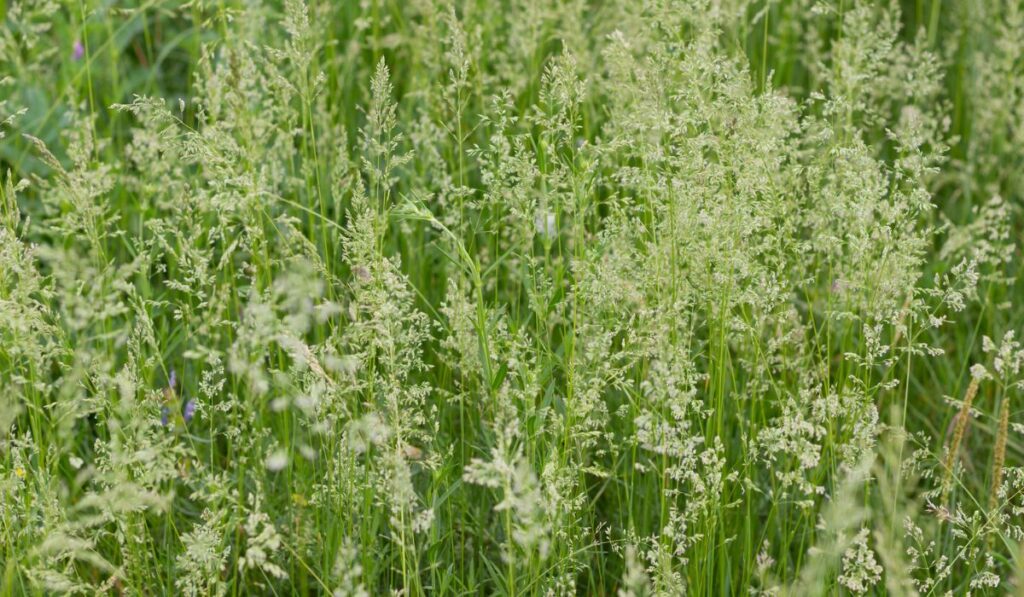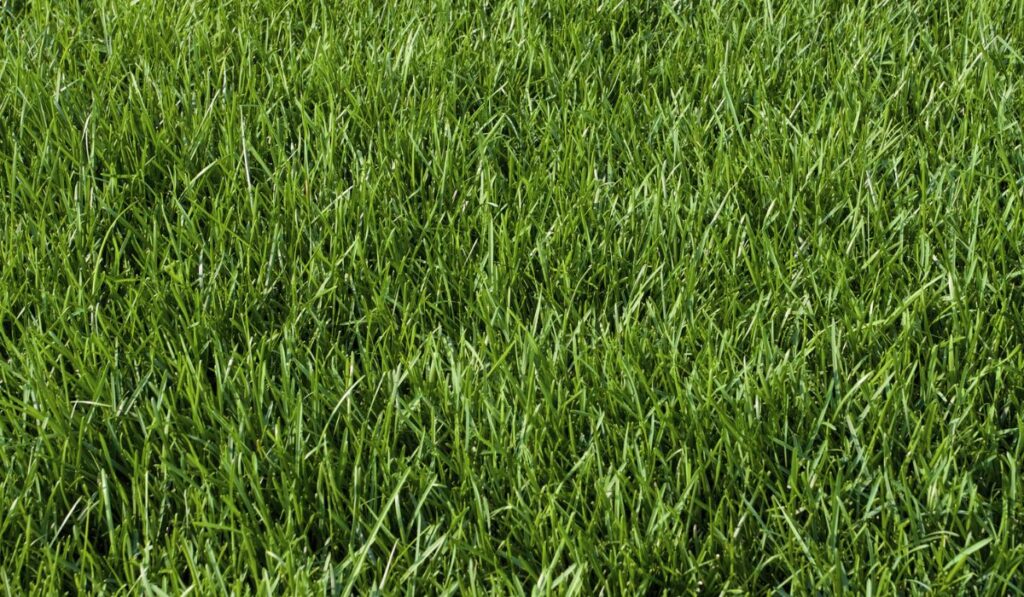If you’ve ever imagined the perfect lawn, there’s a good chance you were picturing Kentucky bluegrass. This stunning grass is beloved by homeowners and farmers alike for its rich color, hearty texture, and impressive durability. If you’re willing to put in some work, this grass can make your lawn the envy of the whole neighborhood. So, when’s the best time to plant Kentucky bluegrass?
Kentucky bluegrass is sown in the fall or spring, when the soil temperature is between 60 and 65℉. That normally means 6-8 weeks before the average first frost or 2-3 weeks after the last frost. This allows the grass to develop a strong root before any extreme weather occurs.
If you’re hoping for a lush green lawn in a colder region, growing Kentucky bluegrass may be your best bet. This hardy grass is one of the few that can withstand cold winters and come back with full force in the spring. So, what are you waiting for? Let’s find out more about this wonderful grass and look at some tips for how to grow it in your own yard.
What Is Kentucky Bluegrass?

Kentucky bluegrass (Poa pratensis) is a perennial grass native to Europe and Asia. It was introduced to North America in the early 1700s and has since become one of the most popular turf grasses in the United States.
Today, over one hundred varieties of Kentucky bluegrass (on Amazon) are grown in golf courses, parks, lawns, and pastures across the country.
This grass gets its name from its deep blue-green color and lush, carpet-like growth. It grows with rhizomes, or horizontal stems that grow just below the soil surface. These rhizomes allow the grass to grow in thick, dense mats that are perfect for high-traffic areas.
It’s also known for aggressive growth habits and the ability to recuperate from wear and tear, making it a popular choice for sports fields and playgrounds.
Kentucky bluegrass is a good source of protein and fiber, which makes it a nutritious feed for cattle. For this reason, it’s also extensively cultivated in pastures for grazing livestock.
Where Does Kentucky Bluegrass Grow Best?
Kentucky bluegrass is a cool-season grass, which makes it ideal for growing in the northern United States. It’s a common sight in lawns from Maine to Montana, where the hardy grass can withstand long, cold winters.
It also does well in the so-called transition zone, a band of states (Pennsylvania, Ohio, Indiana, etc.) that experience both cool and warm weather. So, in general, zones 3 through 9 are ideal for growing Kentucky bluegrass.
Kentucky bluegrass thrives in full sun, although some tolerant varieties can handle the partial sun. It’s also very adaptable to different types of soils, but its biggest need is moisture. This grass doesn’t like drought conditions and will suffer from extreme heat and dryness.
That’s why it’s not suitable for growing in the southern States, where summers are long and hot. However, you might be surprised by some well-watered lawns of Kentucky bluegrass in places like Miami or San Diego.
When to Plant Kentucky Bluegrass
Kentucky bluegrass should be planted either in fall or spring. The best time to plant this grass is in the early fall, about six weeks before the first frost. This gives the grass plenty of time to establish roots before cold weather sets in.
Spring planting can be done as early as the ground can be worked, but it’s best to wait until at least two weeks after the last frost. Ideally, the soil temperature should be above 60℉ (15.5℃). This will ensure the soil is warm enough for the seeds to germinate.
Planting in late summer or early fall has the edge over spring planting, especially in the transition zone. The cooler weather is easier on the grass and gives it a chance to get a head start on growth before the hot summer months. Plus, there’s less competition from weeds that go dormant in the winter.
What Are the Benefits of Kentucky Bluegrass?
Kentucky bluegrass has been a lawn staple for centuries in colder states. Nowadays, some cultivators have been bred to make this grass more tolerant to various conditions, making it a top choice for homeowners across the country.
Here are some of the reasons you might want to consider planting Kentucky bluegrass in your yard:
- Aesthetics: This grass has a beautiful, deep blue-green color that looks stunning on any lawn. The dense growth habit also gives the turf a plush, carpet-like look. Above all, it can spread and fill in empty patches, giving you a stunning lawn with very little effort. The dense growth habit also helps to prevent soil erosion.
- Durability: Kentucky bluegrass grows its “rhizomes” underground, which means the growing points or nodes are always buried. This allows the grass to withstand freezing winters and heavy foot traffic, making it ideal for play areas or high-traffic areas in your yard.
Though it doesn’t like heat and drought, it will bounce back quickly with proper irrigation. - Ease of Care: Once established, this grass requires very little maintenance, especially compared to other turf grasses. It’s tolerant of a wide range of mowing heights, so you can mow it as often or as little as you like.
It also doesn’t require fertilization in loamy soils, though you may need to add a little nitrogen in sandy soils. Overall, it’s a very low-maintenance grass that will save you time and money in the long run. - Great for Livestock: Due to its rapid growth habit and high nutritional value, Kentucky bluegrass is often used as forage for livestock. The lush, green blades are packed with protein and nutrients, making them a healthy food source for cows, sheep, and goats.
If you have livestock, this grass is a great option for pasture or hay production.
How Much Maintenance Does Kentucky Bluegrass Need?

In a suitable environment, Kentucky bluegrass doesn’t need much care. If initial seeding is done with proper aeration and the thatch is kept to a minimum, this grass will stay green and lush with just regular watering and mowing.
However, if the conditions are not ideal, such as very hot and dry summers, this grass will need more water to stay alive and will go dormant (turn brown) during periods of drought. Usually, it needs 2 inches of water per week, either from rainfall or irrigation.
Other than that, you might also need to apply herbicide or pesticide to your lawn if there are problems with weeds, grubs, or other pests. If you live in an area with a lot of foot traffic, you might need to reseed or patch more often.
All in all, Kentucky bluegrass is a relatively low-maintenance grass that will thrive with just regular care.
Lawn Care Tips for Kentucky Bluegrass
Here are a few lawn care tips to help you keep your Kentucky bluegrass looking its best throughout the year:
Mowing
Kentucky grass can be mowed as low as 1.5 inches in winter. It saves the grass from winter-related diseases and helps develop a deep root system for the growing season.
It should be mowed higher in spring (2.5 to 3 inches) and summer (3 to 4 inches) to prevent heat stress and lawn scalping. Make sure you use a sharp mower blade and remove the cutting debris after mowing.
Watering
This grass has shallow roots, so it needs frequent watering, especially during hot, dry spells. Water your lawn deeply (at least half an inch) each session, twice a week. Water more often in high-traffic areas like playgrounds.
Fertilizing
Kentucky Bluegrass does best in nitrogen-rich soil, so you may need to apply 3-5 pounds of nitrogen (on Amazon) per 1,000 square feet of lawn every year. Usually, higher nitrogen levels are needed in the first year of growth.
But it’s always best to use a soil test kit (on Amazon) before applying any fertilizer. Too much nitrogen can lead to thatch build-up, disease, and weak growth.
Weeding and Pest Control
Most pest or disease in this grass is caused by either water shortage or heavy fertilization, so it’s best to keep an eye on those things. If required, various herbicides and insecticides are available for use on Kentucky bluegrass.
Overseeding
Overseeding means planting more seeds to thicken up thinned-out or bald areas of your lawn. Usually, Kentucky bluegrass is quick to regrow and make dense sods, so you won’t have this problem too often.
But if you need to overseed, the best time is early fall. Make sure you don’t apply any fertilizer or herbicide for 60 days after overseeding.
